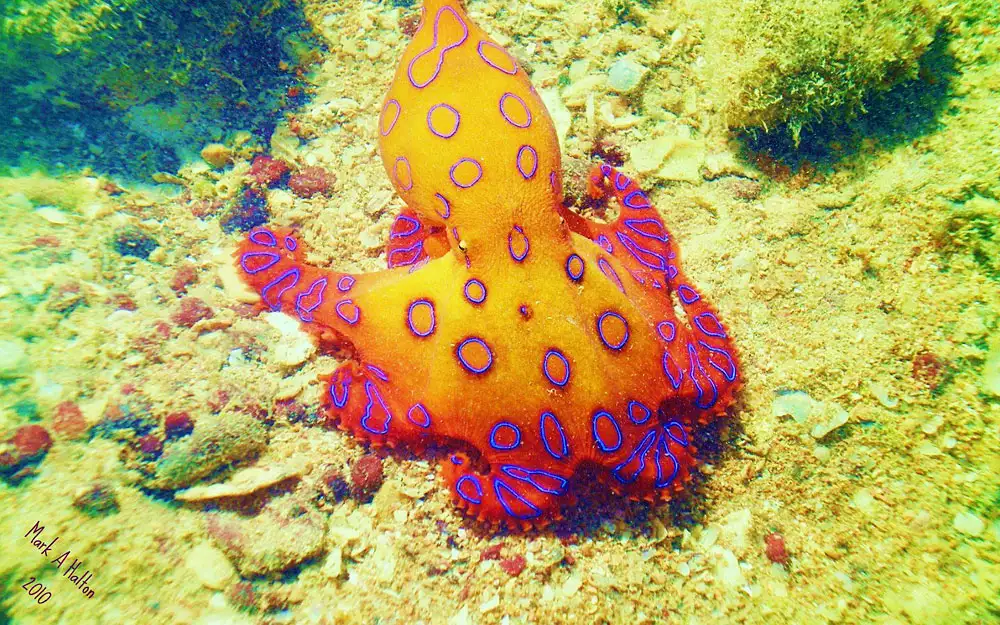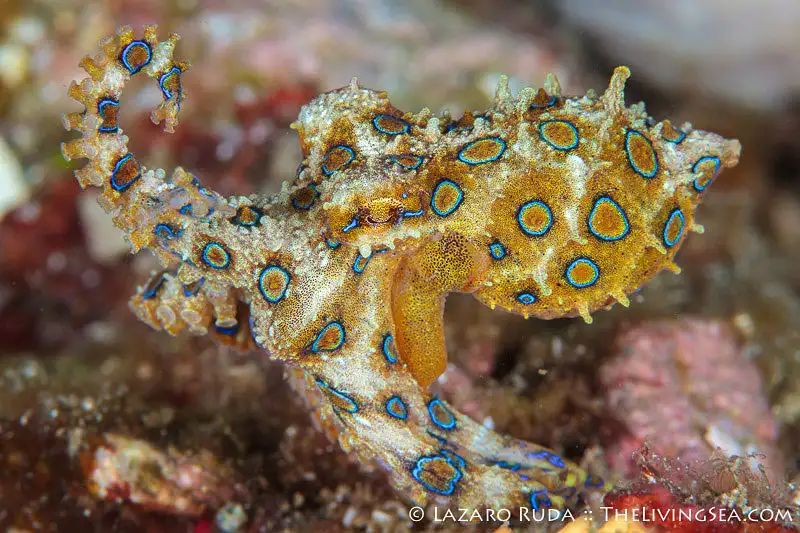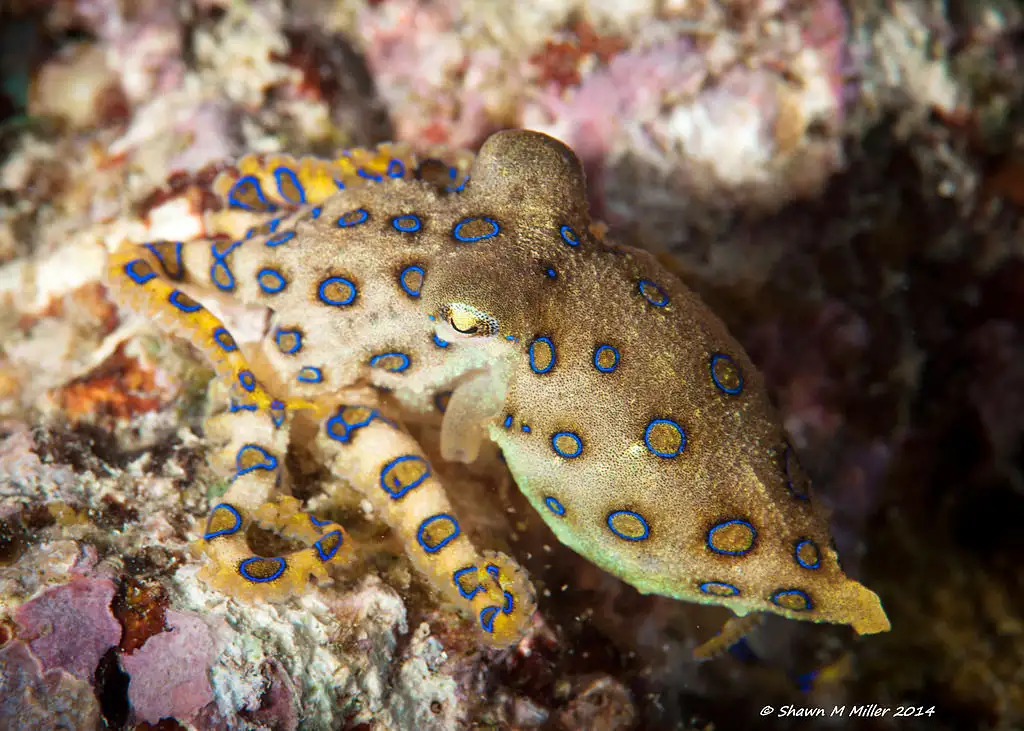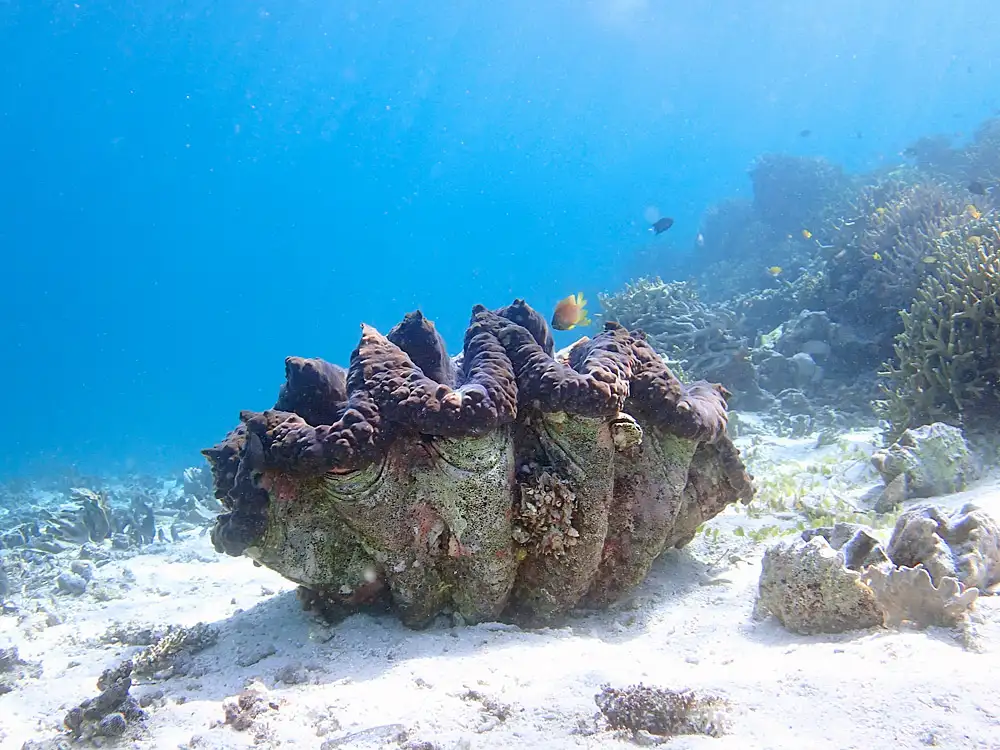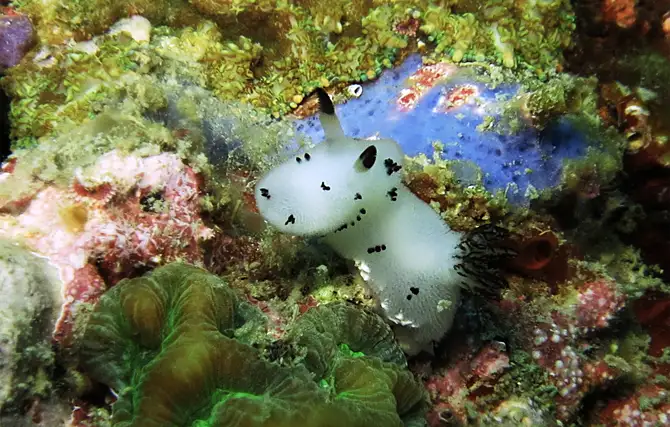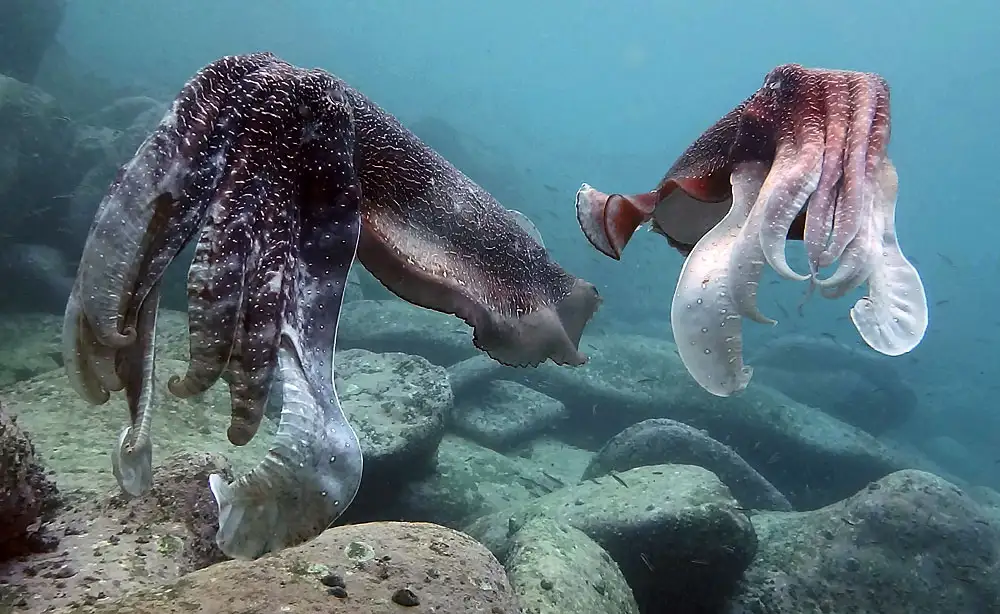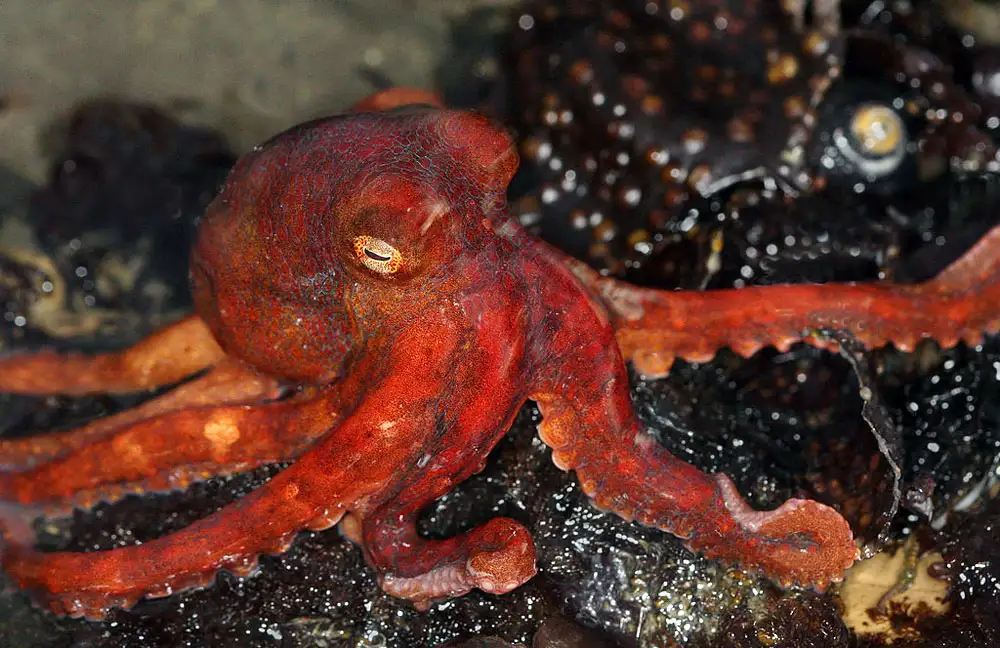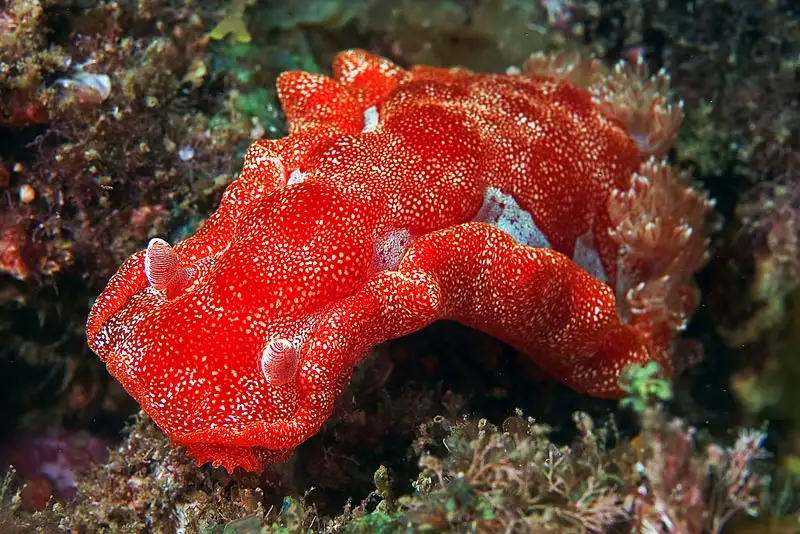Southern Blue‑Ringed Octopus (Highly Venomous)
IUCN
LCBasic Information
Scientific classification
- name:Southern Blue‑Ringed Octopus (Highly Venomous)
- Scientific Name:Hapalochlaena maculosa
- Outline:Mollusca
- Family:Octopodidae Hapalochlaena
Vital signs
- length:Mantle 3–6 cm; arm span ~12–20 cm
- Weight:<100 g (varies)
- lifetime:1–2 years
Feature
TTX‑based venom; vivid blue rings; camouflage; semelparous female brood.
Distribution and Habitat
Southern Australia—intertidal to shallow reefs, seagrass and harbour structures (0–20+ m).
Appearance
Yellow‑brown with flashing blue rings when threatened; large eyes; short arms with fine suckers.
Details
Hapalochlaena maculosa—the southern blue‑ringed octopus—is a small, highly venomous octopus (family Octopodidae). When threatened it displays brilliant blue rings as an aposematic signal. Salivary glands contain tetrodotoxin (TTX), a potent neurotoxin causing rapid paralysis.
Ecology & Biology
Diet: small crustaceans and fishes subdued with the beak and venom.
Reproduction: females brood eggs in crevices and are semelparous, dying after hatching.
Behaviour: crevice‑dwelling and camouflaging by day; more active at night.
Identification
Mantle length ~3–6 cm; rings brighten from faint to vivid blue on a yellow‑brown background when aroused. Large eyes; relatively short arms with fine, dense suckers.
Size & Longevity
Length: mantle 3–6 cm; arm span ~12–20 cm.
Weight: generally<100 g.
Life: ~1–2 years.
Range & Habitat
Southern Australia; intertidal to shallow subtidal (~0–20+ m), favouring rocky reefs, seagrass, rubble and harbour pilings.
Venom & Risk
Toxin: TTX blocks voltage‑gated sodium channels.
Hazard: bites are potentially fatal; symptoms can include numbness, slurred speech and respiratory compromise.
First‑aid (educational): call emergency services; apply a pressure‑immobilization bandage; provide assisted ventilation.
IUCN: marked here as Not Evaluated (NE).
FAQ
Q1. What should I do if I see one? Keep distance—do not touch; use zoom for photos.
Q2. Do they attack people? Defensive bites may occur when handled or threatened.
Q3. Are bites painful? Pain can be mild; nevertheless effects may progress rapidly—seek immediate medical help.
Q4. Why do the rings glow? Coordinated chromatophore/iridophore responses produce the vivid blue rings as a warning.



